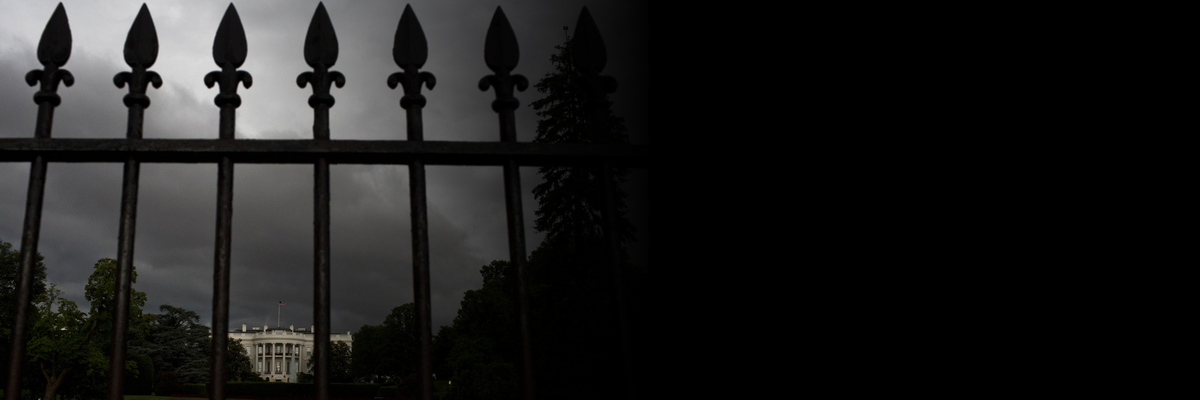According to new reporting by the Wall Street Journal, the U.S. Marshals Service--an arm of the Department of Justice--has been using small aircraft equipped with technology that can mimic the functions of cell towers in order to capture the data contained on phones and mobile devices of people across large areas on the ground below.
Citing those familiar with the program, the Journal report (subscription) reveals how the program's use of so-called "dirtbox" technology is part of "a high-tech hunt for criminal suspects that is snagging a large number of innocent Americans" in a dragnet approach that will remind some of similar techniques known to be used by the National Security Agency and other federal agencies.
The WSJ reporting relates how the Marshals Service operate a fleet of specially-outfitted Cessna airplanes which can take off from "at least five metro-area airports," allowing the aircraft a range that covers "most of the US population."
As GeekWire explains, because the "dirtbox" devices "emulate a cell tower, they can pick up thousands or tens of thousands of signals from other citizens who aren't being targeted by the Marshals."
Writing for Gizmodo where she covers surveillance issues, journalist Kate Knibbs responded to the story by exclaiming, "What the hell." She continued:
This is a huge deal. If the details in the WSJ are accurate, this program is as invasive and disturbing as the NSA surveillance programs exposed last year.
American Civil Liberties Union chief technologist Christopher Soghoian told the WSJ that this was "a dragnet surveillance program. It's inexcusable and it's likely--to the extent judges are authorizing it--[that] they have no idea of the scale of it."
"There are some serious and troubling legal questions about this program," EFF Staff Attorney Hanni Fakhoury told me. "It's important to note this is very different from the government getting this information from a phone company. In the last few months, many state courts and legislatures have required law enforcement get a probable cause search warrant to use these devices. The US Marshals should explain how this program works and what kind of court authorization, if any, they're obtaining to fly planes with 'dirtboxes.'"
That another instance of a large-scale, secret surveillance program from the U.S. government has been exposed will undoubtedly continue to corrode the public's faith in the government's commitment to protecting privacy.
According to the Washington Post:
In some respects, the technology used by the Marshals Service is similar to that used by the FBI, whose agents sometimes deploy StingRay devices in vehicles to collect the serial numbers of individual cellphones and locate them. Privacy groups and some judges have raised concerns that the StingRay technology is so invasive -- in some cases penetrating the walls of homes -- that its use should require a warrant.
Some judges say that federal agents are not providing enough evidence to justify the use of the StingRay, which sweeps up data not only from a suspect's phone but also from those of bystanders.
According to the Journal, the technology used by the marshals is more sophisticated than the StingRay. Because the devices are deployed in the air, they can gather more data than a device in a car on the ground.
And the Guardian adds:
The reportedly indiscriminate collection would permit the marshals and potentially other justice department agencies to avoid having to seek records from the phone companies themselves, especially in criminal investigations where a court order may be required.
The legal basis for the previously undisclosed program is unclear. It is not reportedly a national security or counterterrorism program, but instead used to target crime. The justice department is said to have modified the equipment so as not to interfere with 911 emergency calls.
The report comes nearly 18 months after the Guardian published revelations about National Security Agency bulk phone record collection based on leaks by Edward Snowden, prompting widespread congressional, judicial, political and popular scrutiny of domestic surveillance.
A justice department official, speaking on condition of anonymity, would not confirm or deny existence of the program to collect data using aircraft. But the official insisted the department's activities were lawful and suggested it had received judicial approval. It is unclear if the congressional committees overseeing the collection of cellphone location and identification data have known about the effort.
"Discussion of sensitive law enforcement equipment and techniques would allow criminal defendants, criminal enterprises or foreign powers to determine our capabilities and limitations in this area. In deploying any such equipment or tactics our federal law enforcement agencies comply with federal law, including by seeking court approval," the official said.


